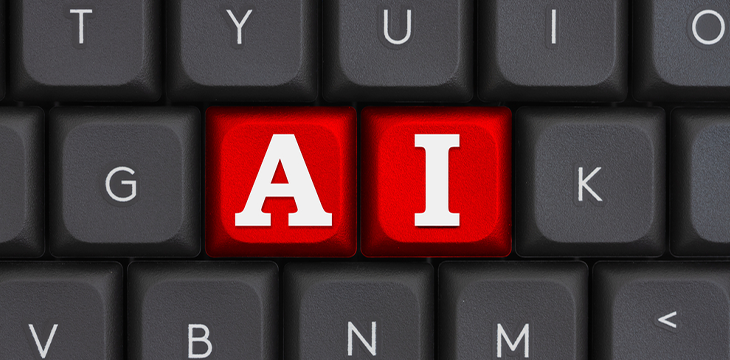
|
Getting your Trinity Audio player ready... |
The Philippines launched the National AI Strategy Roadmap 2.0 (NAISR 2.0) and the Center for AI Research (CAIR) inauguration earlier this month. These initiatives, led by the Department of Trade and Industry (DTI), are backed by the Asian Development Bank (ADB) and mandated by the Tatak Pinoy Act (Republic Act No. 11981), are set to drive AI innovation, bolster the economy, and enhance the quality of life for Filipinos through strategic AI adoption.
According to DTI’s press release, NAISR 2.0 builds on the initial 2021 AI roadmap, incorporating cutting-edge technologies such as generative AI to open new economic opportunities and improve citizens’ lives. This updated strategy reflects the dynamic nature of the AI landscape, integrating contemporary themes like ethics and governance to ensure AI deployment is responsible and beneficial.
Moreover, a significant aspect of NAISR 2.0 is its focus on overcoming critical challenges that hinder AI adoption in the Philippines. These challenges include the limited use cases of AI, insufficient human and physical resources within industries, difficulties in developing effective data strategies, and uncertainties in AI regulation and legal frameworks.
To accelerate AI integration, NAISR 2.0 emphasizes creating a robust, connected, and networked environment, improving data access and value extraction, transforming education and nurturing future AI talent, and upskilling and reskilling the workforce. Additionally, core objectives include fostering an AI ecosystem with ethical considerations, advancing AI research and development, and leveraging AI to drive innovation across various sectors.
Collaborative approach and government support
DTI Secretary Fred Pascual emphasized the importance of a collaborative approach to ensure the success of NAISR 2.0. He called for breaking down silos that hinder cooperation among various sectors, including government, industry, academia, and civil society.
“The success of NAISR 2.0 is anchored on implementing a whole-of-nation approach,” said Pascual. “This necessitates breaking down silos that hinder collaboration across various sectors and stakeholders.”
Establishment of the Center for AI Research
At the same time, the DTI launched CAIR, representing a milestone in the Philippines’ journey toward AI excellence. DTI said CAIR aims to position the country as a global leader in AI-driven innovation and investment. The center is led by Chief AI and Data Officer Dr. Erika Fille Legara and Deputy Chief AI and Data Officer Dr. Sebastian Ibañez. The center is set to harness AI’s transformative power to address pressing societal and industrial challenges.
According to the department, CAIR’s vision is to leverage AI to fuel economic growth, promote inclusive development, and tackle societal challenges. The center is dedicated to exploring AI, Machine Learning, and generative AI solutions from Amazon Web Services (AWS) (NASDAQ: AMZN) to enhance government and citizen services, starting with healthcare and expanding into agriculture by 2024.
Partnerships and global collaboration
In line with its mission, CAIR is collaborating with AI Singapore to explore R&D solutions tailored to the unique challenges faced by Southeast Asian industries. This partnership aligns with CAIR’s goal of creating global links and elevating the Philippines’ contribution to boosting the technological capabilities of sectors across the region.
“The CAIR’s vision is to harness AI’s transformative power to address pressing societal and industrial challenges, fuel economic growth, and promote inclusive development,” Rafaelita M. Aldaba, DTI Competitiveness and Innovation Group Undersecretary, said.
NEDA and DTI’s commitment to AI
Meanwhile, the National Economic and Development Authority (NEDA) has pledged to work with DTI to implement NAISR 2.0, aiming to enhance the government’s capacity for sustainable digital transformation. In his speech during the launch, NEDA Secretary Arsenio Balisacan highlighted the potential economic benefits of AI, estimating gains of PHP 2.6 trillion ($44.6 billion) annually if businesses adopt AI-powered solutions in key sectors like retail, logistics, manufacturing, and financial services.
Balisacan emphasized the importance of addressing internal capacity limitations and infrastructure challenges to effectively oversee AI development and regulation. He also called for investment in education to provide AI-related training, equipping Filipinos with the skills needed to capitalize on emerging technologies.
“To unlock opportunities such technologies enable, we must address the challenges of limited internal capacities in our public institutions and infrastructure. These factors impede the effective oversight and facilitation of AI development and regulation,” Balisacan said.
“The Philippines lags in the government’s readiness to implement AI based on the 2023 Government AI Readiness Index developed by Oxford Insights. With this, adequate and effective digital infrastructure must be in place.”
Balisacan also reiterated his call for the Philippines’ Congress to pass the Open Access Bill to strengthen the country’s internet infrastructure and enhance digital connectivity. He said that legislative support is crucial for the successful implementation of NAISR 2.0 and the goals of CAIR.
The collaborative efforts of DTI and NEDA aim to foster local innovation, entrepreneurship, and sustainable digital transformation, positioning the Philippines as a competitive player in the global AI landscape. Through the strategic implementation of NAISR 2.0 and the establishment of CAIR, the Philippines is set to harness the transformative power of AI to drive economic growth, address societal challenges, and promote inclusive development for all Filipinos.
In order for artificial intelligence (AI) to work right within the law and thrive in the face of growing challenges, it needs to integrate an enterprise blockchain system that ensures data input quality and ownership—allowing it to keep data safe while also guaranteeing the immutability of data. Check out CoinGeek’s coverage on this emerging tech to learn more why Enterprise blockchain will be the backbone of AI.
Watch: Understanding the dynamics of blockchain & AI – Somi Arian
Recommended for you
Lorem ipsum odor amet, consectetuer adipiscing elit. Elit torquent maximus natoque viverra cursus maximus felis. Auctor commodo aliquet himenaeos fermentum
Lorem ipsum odor amet, consectetuer adipiscing elit. Accumsan mi at at semper libero pretium justo. Dictum parturient conubia turpis interdum

 11-22-2024
11-22-2024


